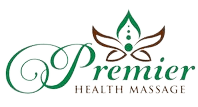A Unique Experience
Best Health & Wellness Massage Therapy in Ashburn
Welcome to Premier Health Massage, your premier destination for massage and wellness therapy in Ashburn. Our team at Premier Health Massage consists of ...
Elevate Your Well-being Experience
Our massage therapists love their craft and invest in their own continuing education to stay up to date with the latest techniques and therapies. They ...
We're a Dedicated and Skilled Team
Our massage therapists at Premier Health Massage are some of the most highly trained and certified professionals in the industry. Our therapists ...
